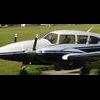1966 20E
-
Members Online
- Vance Harral
- Smiles201
- alexz
- Greg Ellis
- sdmideas
- eman1200
- hais
- bigmo
- Robert Hicks
- 231LV
- DC_Brasil
- BigD
- Grant_Waite
- MikeOH
- Mark89114
- asaxet
- 201er
- ArtVandelay
- FoxMike
- Todd1
- Fly Boomer
- Meshach
- amillet
- alextstone
- varlajo
- kerry
- M20S Driver
- good2eat
- Justin Schmidt
- Mooney in Oz
- Shadrach
- KSMooniac
- Ragsf15e
- Ron McBride
- mooneyflyfast
- Will.iam


Recommended Posts
Join the conversation
You can post now and register later. If you have an account, sign in now to post with your account.